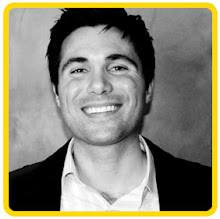Those of
you that know me know that this statement has nothing to do with my political
orientation. LOCO stands for the Law Of
Channel Orthodoxy. Well, it's a theory
actually. A theory I made up. But I call it a law because it makes a better
acronym and because people take laws much more seriously.
Anyway,
the Law of Channel Orthodoxy goes like this:
The time and expense necessary to delivery a fundraising
message (Resources) is positively correlated to the potential success of that
message (Response Rate).
For
example, let's consider face-to-face fundraising. It is most definitely the most
time-intensive, and expensive fundraising method. But it is often the most successful. If I were to fly around the country and ask
each of my donors to give a gift, then I could expect a response rate of 40 to
60 percent or more (note: this is based on 18,000 face-to-face visits that was
conducted over a 10 year period which maintained a 45% response rate).
Then,
let's hop down to direct mail or telefunding.
Is it as expensive to call or mail all of our donors? Absolutely not! But will I get a 45% response rate-- probably
not. Typical response rates for a
successful direct mail and telefunding campaign would be between 6% and upwards
of 20%.
Now,
consider email. Is it as expensive to
send an email as it is a direct mail package?
No way! But are you going to get
a 20% response rate on an email appeal?
Not likely. According to the 2012
Convio Nonprofit Online Marketing Benchmark Report, the average response rate
for a house file email appeal continues to hover around 0.15%.
So, in
each of these examples, it seems that the Law of Channel Orthodoxy seems to
hold up. Still with me?
Okay, so
the question we must ask then is, "how do we beat the Law of Channel
Orthodoxy?"
Answer? Well, there are actually two ways:
Innovation - When we develop a way to achieve the same results while
at the same time reducing the time and expense investment, we call this an
innovation. Believe me, there are many
ways that we can innovate in the nonprofit space. But the problem is that too often nonprofits
feel they need to play it safe. We go
for the guarantee, instead of taking a risk on something that could either go
big, or be a big bust. But what I think
many organizations fail to realize is that there is a risk associated with the
status quo. If we fail to test and try
new things, we are pretty much guaranteed to become obsolete.
But there
is another way that we can beat LOCO.
Optimization - When we increase our response rates or improve results
without proportionally increasing the amount of required resources, we call
this optimization. Optimization begins
with the belief, as Peter Drucker once said, that "adequacy is the enemy
of excellence." It forces us to
never be satisfied. It teaches us to
interpret a 10% response rate as a 90% non-response rate, and inspires us to
develop better ways to communicate so that we can get those non-responders to
join us. Optimization can transform the
culture of an organization by changing the conversation from "if
only..." to "what if..."
Optimization is synonymous with perpetual improvement and is essential
to success.

So, in
order to beat the Law of Channel Orthodoxy, we need to find a way to live left
of LOCO. I'm telling you, once you get
used to it, you wouldn't want to go any other way. Here's a few questions that you can ask
yourself to help break free from going completely LOCO. It might be a good idea to ask your staff
these same questions and compare your answers with theirs.
Am I LOCO?
1. My fundraising calendar is
really solid because we have been doing things the same way for the past few
years and have received good results.
(T/F)
2. I
don't typically try new fundraising techniques because they can be risky and we
owe it to our donors to only invest in sure winners. (T/F)
3. I'm
very happy with our fundraising results.
I don't see how we could possibly do any better. (T/F)
4. I’m convinced that if we just
implement best practices, then we will receive optimal results. (T/F)
5. I’ve been doing this a long time, and my experience and
intuition is what I lean on when I evaluate a new fundraising program. (T/F)
So, How Did You Do?
If you answered true to one or more of the above statements,
then you may be going LOCO! But don’t
worry, it is curable…
 Entries
Entries
 Comments
Comments
 Bookmark
Bookmark
 Fave
Fave





